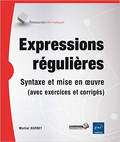GNU/Linux man pages
Livre :
Expressions régulières,
Syntaxe et mise en oeuvre :


GNU/Linux |
CentOS 3.1 |
|
 |
updfstab(8) |
 |
updfstab − update /etc/fstab to reflect removable devices
updfstab [−nt] [−−usage]
updfstab is designed to keep /etc/fstab consistent with the devices plugged into your system. It looks for devices such as cdroms, zip and jaz drives, ls120 drives, and digital cameras on the SCSI and IDE buses. USB devices look like SCSI devices to user space, so those are supported as well, but are only added if they are currently attached to the system (having a scsi device assigned to them is not sufficient).
Devices which updfstab adds to /etc/fstab are marked with the kudzu mount option to distinguish them from other devices. updfstab will not remove devices from /etc/fstab unless they are marked with the kudzu mount option. It also ignores devices that are already listed in /etc/fstab, or which have multiple partitions on the media currently inserted.
-c,-−config=path
Use the configuration specified by path, rather then /etc/updfstab.conf.
-n,-−normalize
Normally, updfstab tries to touch /etc/fstab as little as possible. When this option is given, it will instead move all of the devices with the kudzu mount option to the end of the file, and will list the devices in the same order the internal probe returns.
-t,-−test
When this option is specified, updstab does not update the /etc/fstab file. Instead, it displays the fstab entries it would use to standard out. If no changes need to be made, it outputs the string (nothing to do) rather then a full filesystem table.
The devices updfstab looks for are specified by its configuration file, /etc/updfstab.conf by default. It defines a number of devices which updfstab looks for on the system, along with various attributes of that device. If a single device name is given multiple times, later values override those given earlier. However, match directives accumulate; all specified matches remain in effect for that device. The default value of flags may be changed by specifying a new value for that flag outside of any device section, which changes the default for all future devices.
A simple
configuration file looks like this:
# sample updfstab configuration file
symlink false
device cdrom {
symlink true
match cdrom
}
device zip {
match hd zip
match floppy "zip"
}
Here two devices are specified, cdrom and zip. If a cdrom device is found on the system, a /dev/cdrom is created pointing to the /dev entry for the device, and /mnt/cdrom is added to /etc/fstab. The next entry looks for hard drive devices with zip in their description as well as floppy devices with zip in their description. If either is found /mnt/zip is added to /etc/fstab, but no symlink is created.
Here is the
complete list of directives which may be used:
device name
Set attributes for device name name. The name is used in the /etc/fstab entry and for any symbolic links which are created.
include path
Parsing of the current configuration file is stopped, and the file specified by path is read for current configuration information. Multiple include directives may be given, but they may not appear inside of device sections.
match class string
This directive adds a new rule for this device type; devices found on the system which match this rule are considered a device of the type whose section the match directive appears in. The class must be cdrom, floppy, or hd. If string appears, it must be a substring of the physical device’s description for the rule to match.
nofstab val
If val is true, updfstab does not add a mount entry to /etc/fstab. This is mainly useful in conjunction with symlink.
partition num
Specifies a default partition number which should be mounted from this device. If 0 is used, no partition number appears. updfstab always scans /proc/partitions for the proper partition number before relying on this value.
skip val
The device entry is skipped. This lets a configuration file undefine a device that was defined earlier (such as in an included file). val should be true or false.
symlink val
If val is true, updfstab creates a symbolic link in the /dev directory pointing to the actual device. This symbolic link is then used in /etc/fstab.
/etc/fstab
/etc/updfstab.conf
/proc/partitions
kudzu(1)
Erik Troan <ewt@redhat.com>
 |
updfstab(8) |  |